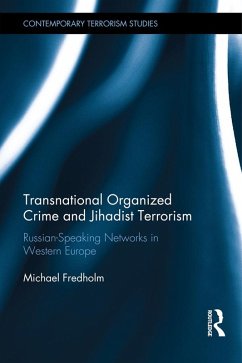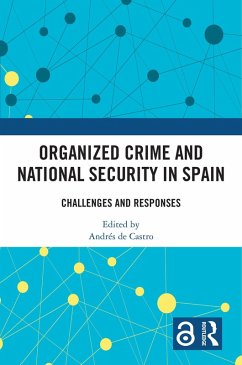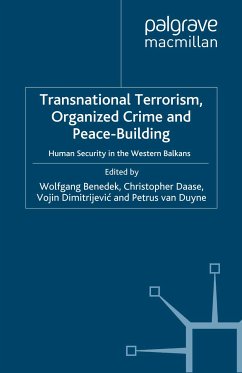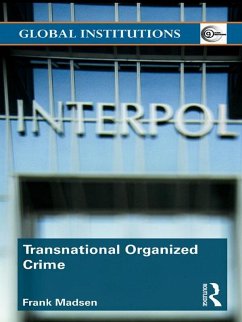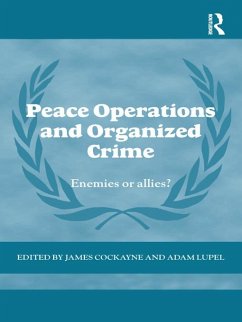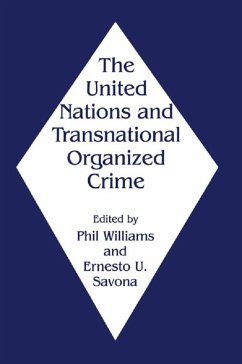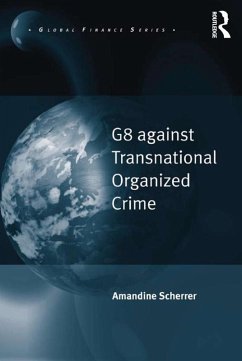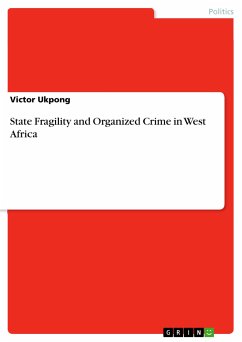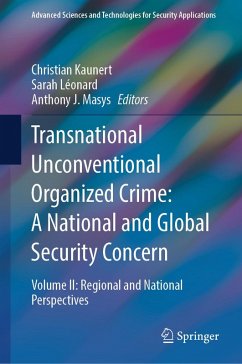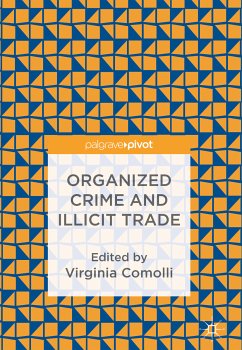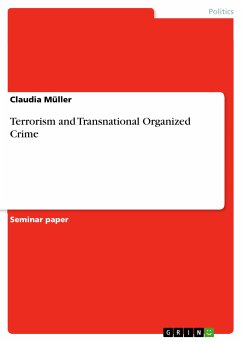
Terrorism and Transnational Organized Crime (eBook, PDF)
Versandkostenfrei!
Sofort per Download lieferbar
13,99 €
inkl. MwSt.
Weitere Ausgaben:

PAYBACK Punkte
0 °P sammeln!
Seminar paper from the year 2012 in the subject Politics - Topic: Peace and Conflict, Security, grade: 1,0, Humboldt-University of Berlin, language: English, abstract: "We will direct every resource at our command to win the war against terrorists, every means of diplomacy, every tool of intelligence, every instrument of law enforcement, every financial influence. We will starve the terrorists of funding, turn them against each other, rout them out of their safe hiding places, and bring them to justice" (Cited in Biersteker and Eckert 2008: 1). President George W. Bush, September 24, 2001 In t...
Seminar paper from the year 2012 in the subject Politics - Topic: Peace and Conflict, Security, grade: 1,0, Humboldt-University of Berlin, language: English, abstract: "We will direct every resource at our command to win the war against terrorists, every means of diplomacy, every tool of intelligence, every instrument of law enforcement, every financial influence. We will starve the terrorists of funding, turn them against each other, rout them out of their safe hiding places, and bring them to justice" (Cited in Biersteker and Eckert 2008: 1). President George W. Bush, September 24, 2001 In the immediate aftermath of the attacks in the United States on 11 September 2001 President W. Bush declared America's "War on Terrorism" in which he assured to defeat terrorist movements and their methods of funding that could be used to support the acts of global terrorist (Biersteker and Eckert 2008; 1). The examination of broader terrorism studies literature shows "financial and material resources are correctly perceived as the lifeblood of terrorist operations, and governments have determined that fighting the financial infrastructure of terrorist organizations is the key to their defeat" (Grialdo and Trinkunas 2007; 1). Since the attacks of 9/11 the US has designed a strong strategy to fight terrorist groups and their financing. International and national measures have been carried out such as the International Convention for the Suppression of the Financing of Terrorism, the enforcement of international sanctions, and the expansion of law enforcement to target terrorism financing and disrupt terrorist operation (Sheppard 2002). However, the spectrum of terrorist funding is broad. In particular, the increasing reliance on criminal activities by terrorist since the end of the Cold War and the subsequent decline of state sponsorship, such as the rising pressure of law enforcement, network structures became an essential source to safeguard the existence of many terrorist and criminal groups. The development of the so- called "crime- terror" nexus, in which two traditionally autonomous groups started to expose various operational and structural parallels, implicated a key income source for terrorists and has brought sheer difficulty to develop successful strategies to freeze the terrorist monetary trail. In the following, this essay examines the involvement of terrorist groups in criminal activities as a source of funding and whether or not it is a sustainable and profitable source for terrorist funding. Moreover, we try to evaluate to what extent the so- called "terror-crime nexus" poses a threat to global security.
Dieser Download kann aus rechtlichen Gründen nur mit Rechnungsadresse in A, B, BG, CY, CZ, D, DK, EW, E, FIN, F, GR, HR, H, IRL, I, LT, L, LR, M, NL, PL, P, R, S, SLO, SK ausgeliefert werden.




